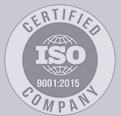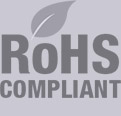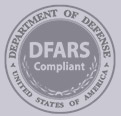The Ins and Outs of Insourcing and Outsourcing
Leave a CommentThere was a time not long ago when it seemed that every factory in the United States was doggedly determined to set itself up anew in China. After all, the price of labor was astronomically cheap; there were no OSHA requirements. As a result, our manufacturing sector took a monumental hit from which it is still recovering. That being said, there’s good news to all this: while not all of the factory jobs that powered this nation in the 50s – 70s are ever coming back, a lot of them have already returned, or been “insourced,” as the terminology goes.
Part of the reasoning behind this decision of American companies to insource manufacturing jobs back to the States is because of the shorter, more cost-effective “lots” involved. It’s beginning to make better sense for “higher-end” lots to be sourced locally – say, an order of 500 units where the overall material and workmanship quality is higher, and the shipping costs remain astronomically lower. In the meantime, if a cheap product requires a larger production run with less costly materials (say 10,000), then it makes good sense to outsource the lot to an overseas company where the overall labor costs match the larger, less customized volume required.
The fact is that at PMI, we’re masters at both insourcing and outsourcing, certainly when it comes to reducing a client’s costs while still maintaining the quality of product. Recently, we were bidding with a competitor for a contract with an agricultural client. The client originally wanted their product to be made from grade-5 steel – something both our company and our competitor were able to deliver on – but that particular material proved too costly. This might have been the end of it for some companies. But instead, we sorted through our supply chain, taking a look at other materials that would cost less and still provide the necessary workmanship required. We found a supplier who could provide us with SAE 1541 steel, a cheaper material and one that would still meet all client specifications. Once we discovered that loophole solution, the rest was easy: the client ordered from us, and we provided them with exactly what they needed.
Navigating the ins and outs of insourcing and outsourcing is never an easy proposition in today’s marketplace. It requires experience, savvy intuitions, and a long-time list of connections. At PMI, we bring all of these to the fore when going to bat for any given customer of ours.
How PMI Helped Save an Industry on the Brink of Disaster
Leave a CommentIt’s not like we’ll ever go around wearing superhero capes here at our company, nor will we ever take principal credit for keeping the American RV industry from the edge of bankruptcy. But it has to be said, and accurately so, that when the Great Recession hit our shores in 2008, we played our part in making sure things stayed afloat. The Great Recession sent shockwaves rippling through every sector of the country. One of those regions most impacted was the already hard-pressed Midwestern Rust Belt, which had lost hundreds of thousands of manufacturing jobs due to outsourcing and automation throughout the first years of the decade. In the course of a few years, Midwestern cities had eroded noticeably. Huge sections of Detroit lay abandoned to the weeds and spray-paint. And small, one-industry towns across Michigan, Indiana, Ohio, and western Pennsylvania went up for sale seemingly overnight once their factories shut down.
One industry powerfully affected by the downturn was the RV industry. With the widespread devaluation of real estate across America, it suddenly didn’t seem like a great idea to go out and buy an RV, especially when one’s home was up for foreclosure. The RV industry – much of it based in South-Central Michigan as well as Elkhart and South Bend, Indiana – turned to PMI to help keep its costs down. Since we’d already provided considerable numbers of parts for the RV industry, it was only natural for them to look to us for some leeway during hard times.
When times got tough, we didn’t let them down. Our company went into overdrive in making sure that our loyal customers were provided for in hard times as well as boom times. We cut the costs of our parts and services, and strategized many hours of the day to insure that a down-on-its-luck industry would rise to its feet again.
The RV industry is already making a comeback. Sales and rentals are up across the board, profits are being made, and RV industry towns that hovered on the brink of vacancy are finding new ways for life to go on. It’s not as though we bailed out the Big Three or anything, but from our standpoint, we’re glad to say that when the going got tough, we didn’t flag or fail our trusted clientele.




